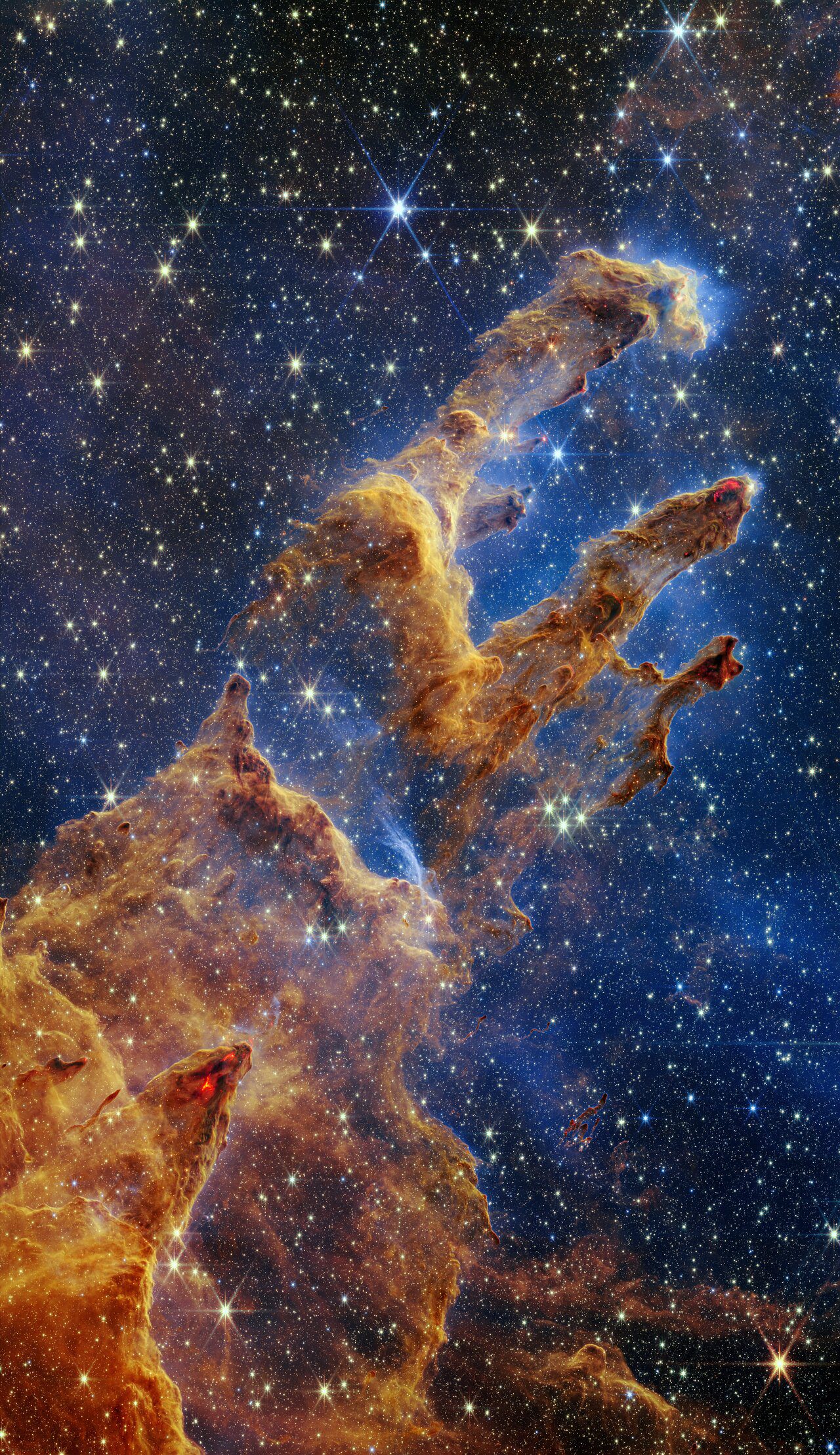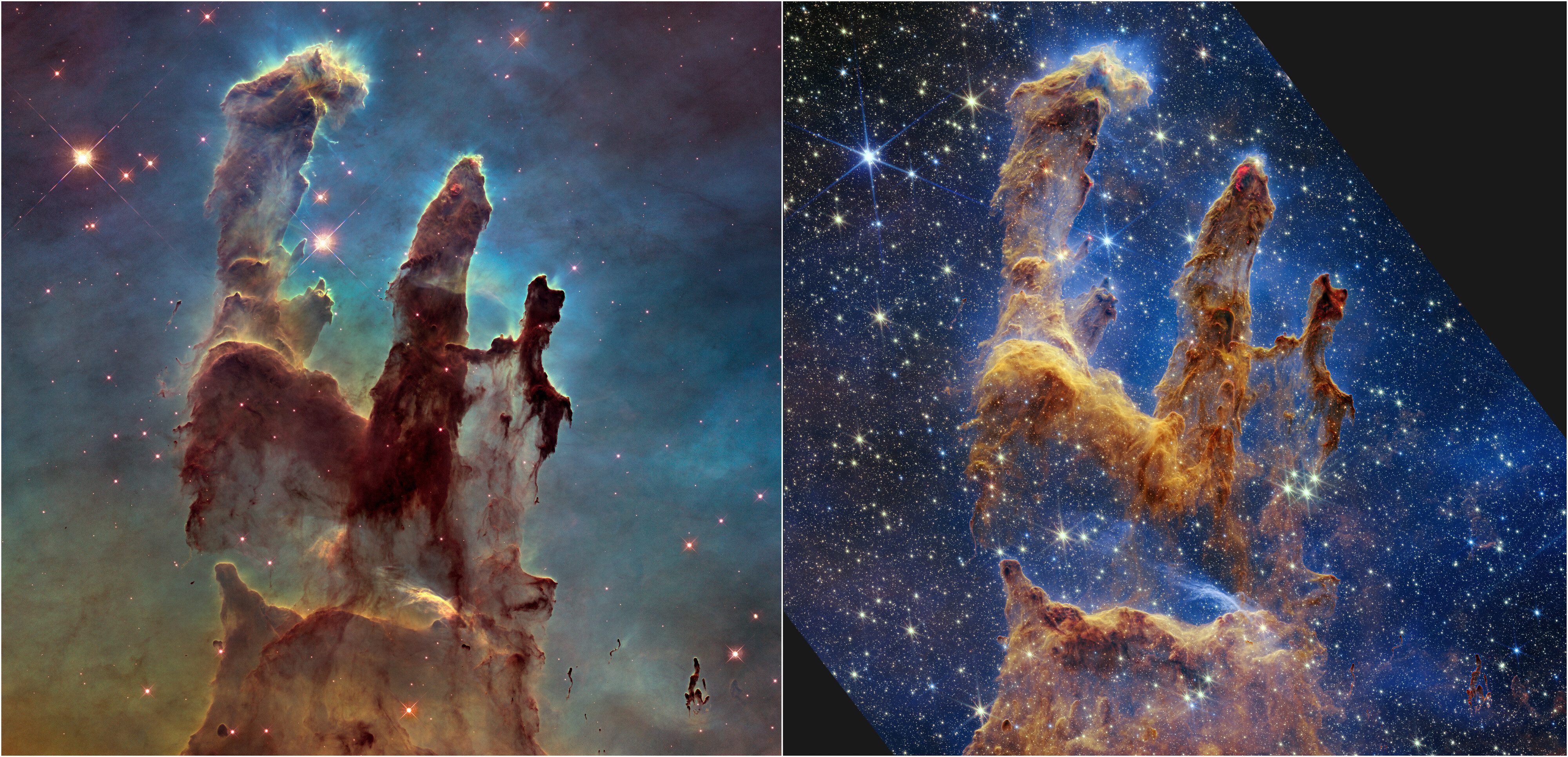A new JWST image just dropped and it may be its most epic yet. The most powerful eye in the sky has turned its attention to one of the undoubtedly most iconic cosmic features known to humanity, the Pillars of Creation.
Brought to the world’s attention in 1995 thanks to Hubble’s first spectacular image of it, the “pillars” are made up of great trunks of interstellar gas and yet, the feature is a very small part of the Eagle Nebula (Messier 16) it resides in. But its otherworld nature means it has been snapped by the world’s best telescopes again and again.
Now, it’s had a JWST do-over and you really need to find the biggest screen you can to look at this full-size image of the star-forming region’s pillars of gas and dust where protostars (the bright red orbs) that are just a few hundred thousand years old will continue to form for millions of years.

The full JWST image of the Pillars of Creation. Look at it on the biggest screen you have. Image credit: NASA, ESA, CSA, STScI; J. DePasquale, A. Koekemoer, A. Pagan (STScI)
JWST sees the universe in infrared light, which can pass through cosmic gas and dust more easily, which means it is capable of penetrating deeper into the cosmos than a telescope using visible light, like Hubble.
By looking at the mid-infrared, JWST’s Near-Infrared Camera (NIRCam) effectively peers through the clouds of dust and gas, revealing the stars and nebulae behind it. For comparison, Hubble picks up ultraviolet and visible light, which become highly scattered by interstellar dust compared to infrared, showing an opaque image of the Pillars.

The beautiful Pillars of Creation as snapped by Hubble (left) and JWST (right). Image credit: NASA, ESA, CSA, STScI; J. DePasquale, A. Koekemoer, A. Pagan (STScI)
However, it may appear that the near-infrared light has let JWST peer through the semi-transparent pillars and reveal huge cosmic distances behind it, but the interstellar medium stands in its way. This is the matter and radiation that exist between star systems in a galaxy and is why there are no distant galaxies in this new view.
Plus, as the European Space Agency explains, “dust is lit up by the collective light from the packed ‘party’ of stars that have burst free from the pillars. It’s like standing in a well-lit room looking out a window – the interior light reflects on the pane, obscuring the scene outside and, in turn, illuminating the activity at the party inside.”
JWST’s new view of the Pillars will help astronomers build a better 3D view of the star-forming region, meaning a better understanding of how and where stars form.
Source Link: JWST Takes Jaw-Dropping, Star-Filled Image Of Iconic Pillars Of Creation